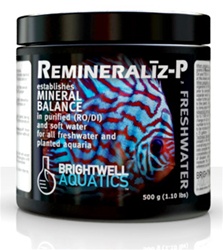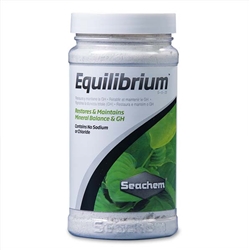Perhaps this is off-topic, but I don't know of another form so oriented towards water chemistry in aquaria, so I'm posting here. Worse, it's freshwater, but bear with me.
I have >40 years experience keeping fish. I am employed as a chemist, and have an extensive background in analytical chemistry, and have what I would consider a strong understanding of water chemistry. But I'm stumped.
I have oscars, and they get hole-in-the-head disease. It's been in remission for several years now. However, there is one commonality: when water parameters start to go "bad" (by whatever metric), the larger one gets these opalescent, hazy white spots on his head. I fix it, and it goes away. Oddly, they appear in late November every year for reasons I can't figure out.
However, most recently, I've been trying to lower the TDS; it's about 550 ppm, from the tap water we have. Here's the weird part: every time I try to lower the TDS by replacing the tank water with RO- even over the course of several days to drop it to ~480 from 550- the hazy spots appear, and I know if I continue, the fish will get erosions.
The pH is high (just south of 8.0), the filtration is strong, water quality and clarity is good, other than a bit of nitrate straight out of the tap. Of course, at 550 ppm TDS and pH of almost 8, moving the pH with bisulfate is a monumental task. Supplementation with magnesium sulfate doesn't seem to help too much, if at all. The fish eat strongly, even when affected by erosions.
For the life of me, I can't figure out what's triggering the advent of the disease by using RO. I feed it straight from the RO unit into the sump, trickling it in a few mL at a time into a 120-gallon tank with ~15 gallons of sump volume.
Normally at this stage I give up and go back to 100% treated tap water, but I'm going to try replacing a few gallons a day with RO that has passed through another aquarium I have, drip-fed into the 120-gallon system, so see if it's an acclimatization thing.
If anyone has suggestions as to what to try, or what could be responsible as regards the RO system, I'm wide open to recommendations. I've been fighting this for years.
I have >40 years experience keeping fish. I am employed as a chemist, and have an extensive background in analytical chemistry, and have what I would consider a strong understanding of water chemistry. But I'm stumped.
I have oscars, and they get hole-in-the-head disease. It's been in remission for several years now. However, there is one commonality: when water parameters start to go "bad" (by whatever metric), the larger one gets these opalescent, hazy white spots on his head. I fix it, and it goes away. Oddly, they appear in late November every year for reasons I can't figure out.
However, most recently, I've been trying to lower the TDS; it's about 550 ppm, from the tap water we have. Here's the weird part: every time I try to lower the TDS by replacing the tank water with RO- even over the course of several days to drop it to ~480 from 550- the hazy spots appear, and I know if I continue, the fish will get erosions.
The pH is high (just south of 8.0), the filtration is strong, water quality and clarity is good, other than a bit of nitrate straight out of the tap. Of course, at 550 ppm TDS and pH of almost 8, moving the pH with bisulfate is a monumental task. Supplementation with magnesium sulfate doesn't seem to help too much, if at all. The fish eat strongly, even when affected by erosions.
For the life of me, I can't figure out what's triggering the advent of the disease by using RO. I feed it straight from the RO unit into the sump, trickling it in a few mL at a time into a 120-gallon tank with ~15 gallons of sump volume.
Normally at this stage I give up and go back to 100% treated tap water, but I'm going to try replacing a few gallons a day with RO that has passed through another aquarium I have, drip-fed into the 120-gallon system, so see if it's an acclimatization thing.
If anyone has suggestions as to what to try, or what could be responsible as regards the RO system, I'm wide open to recommendations. I've been fighting this for years.
















